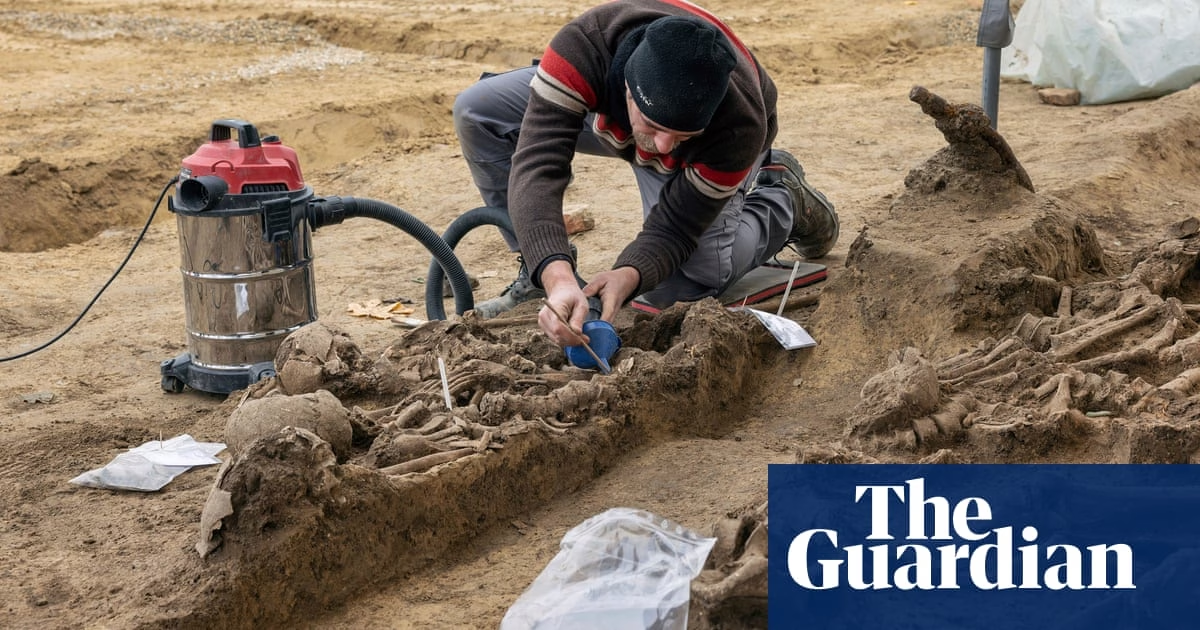During renovation work on a football pitch in Vienna last October, construction workers made a remarkable discovery: a mass grave containing the intertwined skeletal remains of individuals, likely warriors from a battle involving Germanic tribes during the first-century Roman Empire.
This week, after conducting archaeological analyses, experts from the Vienna Museum presented the findings, linking the grave to a catastrophic military event and identifying it as the first known instance of fighting in the region. The site in Vienna’s Simmering neighborhood has confirmed the presence of 129 individuals, with the possibility of finding more than 150 bodies—an unprecedented discovery in central Europe.
The manner in which the bodies were deposited, in a hastily or disorganized manner, suggests chaos following the battle. Each skeleton examined showed signs of injury, particularly to the head, torso, and pelvis, indicating conflict rather than execution. The victims were predominantly male, aged between 20 and 30 years old, and exhibiting good dental health.
Carbon-14 analysis dated the bones between AD 80 and AD 130, corroborated by artifacts found, such as Roman military equipment, indicating a connection to Roman warfare. One of the most significant clues was a dagger type used specifically between the mid-first century and the start of the second century.
While only one victim has been identified as a Roman legionary thus far, further identification of the fighters and their allegiance is expected through DNA and strontium isotope analysis. The prevailing theory suggests a connection to Emperor Domitian’s Danube campaigns (86-96 AD). Additionally, the excavation has uncovered signs of the early settlement that would later become Vienna.
Source: https://www.theguardian.com/world/2025/apr/03/roman-era-battlefield-mass-grave-discovered-under-vienna-football-pitch








